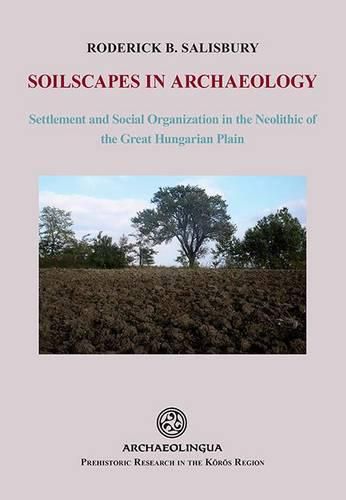Readings Newsletter
Become a Readings Member to make your shopping experience even easier.
Sign in or sign up for free!
You’re not far away from qualifying for FREE standard shipping within Australia
You’ve qualified for FREE standard shipping within Australia
The cart is loading…






The places around us are an integral part of our social life. Daily activities are associated with specific living and working areas, and these associations create patterns that reflect the way people behave within defined spaces. Cooking, storage, craftwork, waste disposal, and other daily tasks take place in culturally accepted spaces. These everyday activities leave chemical and geophysical traces in the soil, creating cultural soilscapes. In this book, the author uses the soilscapes from small Late Neolithic and Early Copper Age settlements in the Koeroes Region of the Great Hungarian Plain to explore the relationship between spatial distributions and community organization during the major social and economic transformations that occurred at the turn of the Neolithic and Copper Age. Focusing on soil, rather than on artifact distributions or architecture, reveals patterns of continuity in spatial organization at small settlements. This contrasts with the spatial organization at large, nucleated Late Neolithic settlements, which differs considerably. The proposed model of household clusters and activity zones provides a framework for understanding shifts in spatial structure as they relate to social organization, and will prove useful in other regions and periods of cultural transformation.
$9.00 standard shipping within Australia
FREE standard shipping within Australia for orders over $100.00
Express & International shipping calculated at checkout
Stock availability can be subject to change without notice. We recommend calling the shop or contacting our online team to check availability of low stock items. Please see our Shopping Online page for more details.
The places around us are an integral part of our social life. Daily activities are associated with specific living and working areas, and these associations create patterns that reflect the way people behave within defined spaces. Cooking, storage, craftwork, waste disposal, and other daily tasks take place in culturally accepted spaces. These everyday activities leave chemical and geophysical traces in the soil, creating cultural soilscapes. In this book, the author uses the soilscapes from small Late Neolithic and Early Copper Age settlements in the Koeroes Region of the Great Hungarian Plain to explore the relationship between spatial distributions and community organization during the major social and economic transformations that occurred at the turn of the Neolithic and Copper Age. Focusing on soil, rather than on artifact distributions or architecture, reveals patterns of continuity in spatial organization at small settlements. This contrasts with the spatial organization at large, nucleated Late Neolithic settlements, which differs considerably. The proposed model of household clusters and activity zones provides a framework for understanding shifts in spatial structure as they relate to social organization, and will prove useful in other regions and periods of cultural transformation.